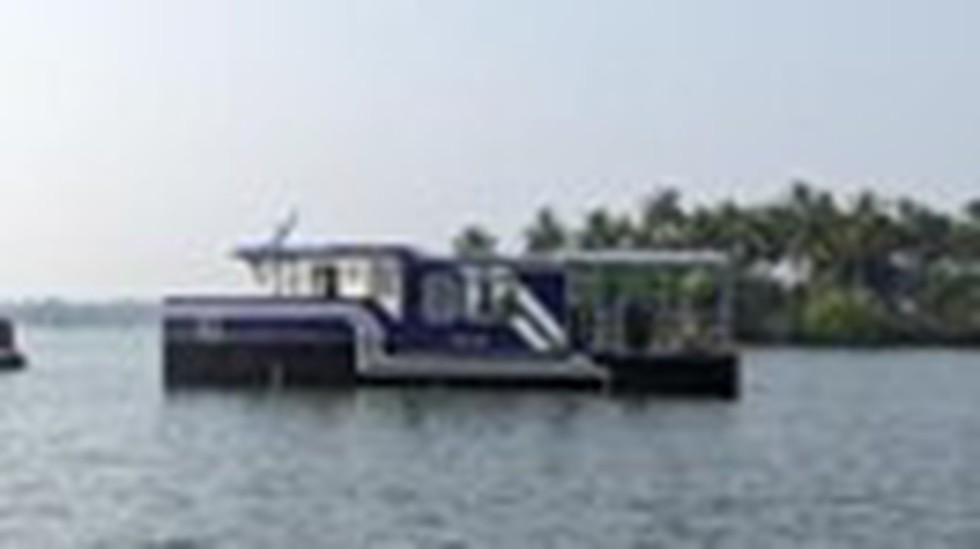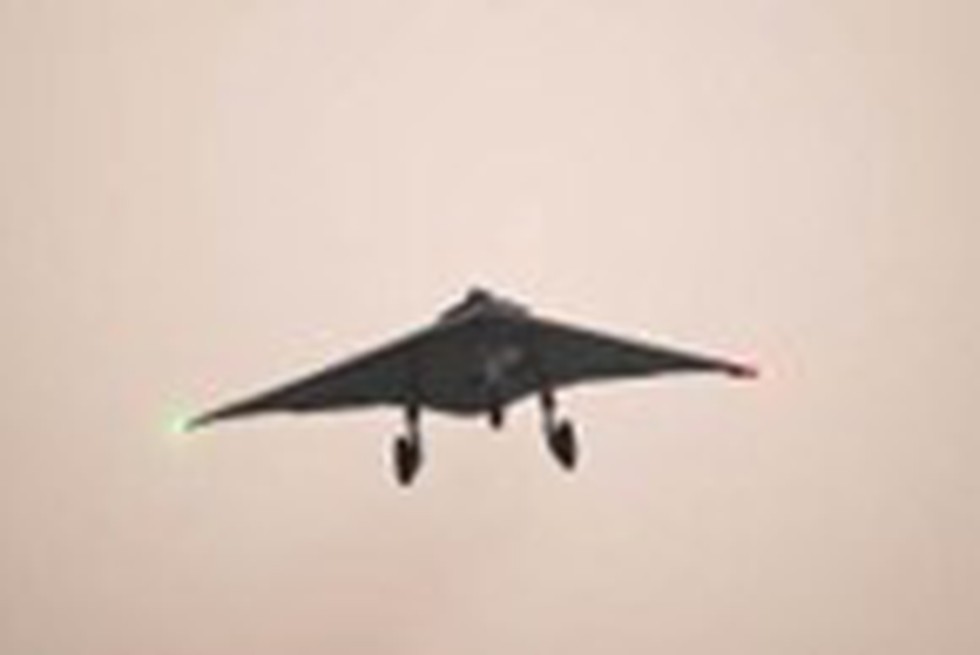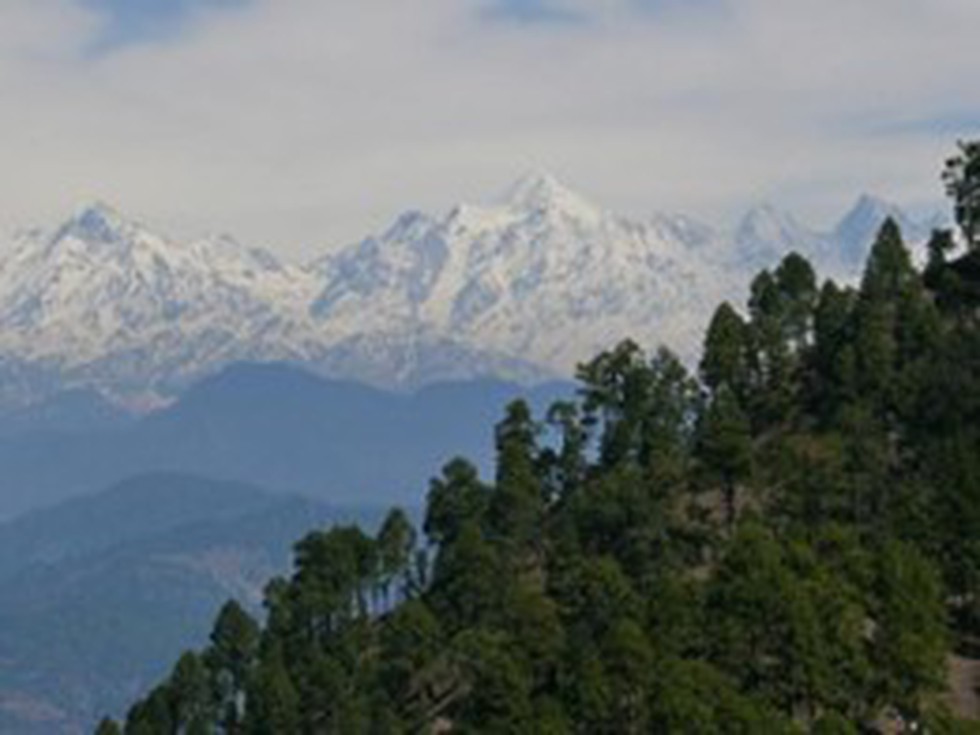
About Barracuda Boat:
- It is named after the swift, long fish, Barracuda.
- It can be deployed even in the rough seas as a workboat to ferry up to 12 passengers and cargo.
- Features: This vessel can attain a top speed of 12.5 knots (23 kmph) and has a range of seven hours on a single charge.
- It has twin 50 kW electric motors, a marine-grade LFP battery, and 6 kW solar power, epitomising efficient and clean energy usage.
- This cutting-edge vessel was jointly developed by Mazagon Dock Shipbuilders and Navalt.
Key facts about Barracuda fish:
- It is any of about 20 species of predacious fishes of the family Sphyraenidae.
- Barracudas are primarily fish eaters, preying on such smaller fishes as mullets, anchovies, and grunts.
- Distribution: These fishes are found in all warm and tropical regions; some also range into more temperate areas.

About Austropallene halanychi:
- The spider with a strange yellow body colour was found off the Antarctic Ocean and has four near-black eyes and large bulbous claws.
- It was pulled from the ocean floor in the Ross Sea, about 1,870 feet (570 metres) below the surface.
- Features:
- It is a distant relative to horseshoe crabs and arachnids.
- The sea spider also has a peculiar way of eating in which it does not use its mouth but a straw-like proboscis to consume food.
- Another bizarre function found in the species was its way of respiration - it breathes through its legs.
- In addition, the new species has large claws that look like "boxing gloves," which it likely uses to grab hold of soft foods like anemones and worms
Key points about Ross Sea:
- It is a giant bay just 320 km from the South Pole.
- A large portion of the sea is covered by the Ross Ice Shelf, the largest ice shelf in Antarctica. The sea is remote and positioned south and slightly east of New Zealand.
- It is the first protected area in Antarctica, and home to most of the world’s penguins and many species of whale.
- It is strongly influenced by the coastal East-Wind Drift that sets up a vast clockwise gyre accompanied by deepwater upwelling.
- It is one of the last intact marine ecosystems in the world, home to penguins, seals, Antarctic toothfish, and whales.

About the Flying Wing Technology Demonstrator:
- It is an indigenous high-speed flying-wing Unmanned Aerial Vehicle (UAV).
- It is designed and developed by DRDO’s Aeronautical Development Establishment.
- The maiden flight of this aircraft was demonstrated in July 2022.
- These flight-tests led to achievements in development of robust aerodynamic and control systems; integrated real-time and hardware-in-loop simulation, and state-of-the-art Ground Control Station.
- The team had optimised the avionic systems, integration and flight operations towards the successful seventh flight in final configuration.
- The aircraft prototype, with a complex arrowhead wing platform, is designed and manufactured with light-weight carbon prepreg composite material developed indigenously.
- The autonomous landing of this high-speed UAV, without the need for ground radars/infrastructure/pilot, showcased a unique capability demonstration, allowing take-off and landing from any runway with surveyed coordinates.

About the International Institute for the Unification of Private Law:
- It is an independent intergovernmental Organisation.
- It was set up in 1926 as an auxiliary organ of the League of Nations, following the demise of the League it was re-established in 1940 on the basis of a multilateral agreement, the UNIDROIT Statute.
- Members: It consists of 65 Member States are drawn from the five continents and represent a variety of different legal, economic and political systems as well as different cultural backgrounds.
- Funding: The Institute is financed by annual contributions from its Member States which are fixed by the General Assembly.
- Structure:
- It has an essentially three-tiered structure, made up of a Secretariat, a Governing Council and a General Assembly.
- The Secretariat is the executive organ of UNIDROIT responsible carrying out its Work Programme from day to day.
- It is headed by a Secretary-General appointed by the Governing Council on the nomination of the President of the Institute.
- The Secretary-General is assisted by a team of international civil servants and supporting staff.
- The Governing Council supervises all policy aspects.
- The General Assembly is the ultimate decision-making organ of UNIDROIT.
- Languages: The official languages are English, French, German, Italian and Spanish; its working languages are English and French.
- India has been a member of this organisation since 1950.

About Tax Inspectors without Borders programme:
- It is a joint initiative of the United Nations Development Programme (UNDP) and the Organisation for Economic Cooperation and Development (OECD).
- It was launched in 2015.
- It aims to strengthen developing countries' auditing capacity and multinationals' compliance worldwide.
- Duration: This programme is expected to be of 12-18 months duration.
- In this, India in collaboration with the TIWB Secretariat and support of the UNDP Country Office, Barbados and the Eastern Caribbean aims to aid Saint Lucia in strengthening its tax administration by transferring technical knowledge and skills to its tax administration, and through sharing of best practices.
- The focus of the programme will be on effective use of automatic exchange of information under the Common Reporting Standard (CRS) framework.
- This programme complements the broader efforts of the international community to strengthen co-operation on tax matters and contribute to the domestic resource mobilisation efforts of developing countries.

About Vijay Diwas:
- Vijay Diwas is commemorated on December 16 every year to honour the victory of the Indian armed forces over Pakistan in the 1971 war and to pay tribute to the soldiers who sacrificed their lives for the country.
- The day is also observed in Bangladesh as ‘Bijoy Dibos’ or Victory Day, marking the country’s formal independence from Pakistan.
- History:
- The 1971 war was instigated by the genocide perpetrated by the oppressive Pakistani military regime, led by General Yahya Khan, against the people of East Pakistan.
- The conflict erupted when the Sheikh Mujibur Rahman-led Awami League emerged as the winner in the 1970 elections.
- Post-elections, the Pakistani military used force to influence the results, leading to a mass exodus of people from East Pakistan.
- India intervened during this critical period.
- The then-Prime Minister of India, Indira Gandhi, provided refuge to those who fled from the other side of the border.
- The situation escalated on December 3, 1971, when Pakistan launched air strikes on 11 Indian airbases, compelling Indira Gandhi to instruct India's Army Chief, General Sam Manekshaw, to initiate a full-scale war against Pakistan.
- India supported Bangladesh nationalist groups and executed 'Operation Trident,' led by the Indian Navy, to target Karachi Port.
- Following a 13-day battle, India secured a resounding triumph over Pakistan on December 16, 1971, leading to the creation of Bangladesh from the former East Pakistan.
- On this significant day, General Amir Abdullah Khan Niazi of Pakistan signed the Instrument of Surrender, surrendering with 93,000 Pakistani soldiers before the Indian Army and the Mukti Bahini of Bangladesh, marking the most substantial military surrender post-World War II.

About the Marginal Cost of Funds based Lending Rate (MCLR):
- MCLR is the minimum lending rate below which a bank is not permitted to lend.
- It is aimed at facilitating the calculation of the minimal interest rate for various types of loans that banks offer.
- The Reserve Bank of India (RBI) introduced the MCLR methodology for fixing interest rates on April 1, 2016, in order to enhance the effectiveness of monetary policy transmission as well as increase transparency in the rate of interest setting procedure.
- It replaced the base rate structure, which had been in place since July 2010.
- How is MCLR calculated?
- MCLR is determined internally by the bank depending on the period left for the repayment of a loan.
- MCLR is closely linked to the actual deposit rates and is calculated based on four components:
- the marginal cost of funds
- negative carry-on account of cash reserve ratio
- operating costs
- tenor premium.
- Under the MCLR regime, banks are free to offer all categories of loans at fixed or floating interest rates.
- The actual lending rates for loans of different categories and tenors are determined by adding the components of spread to MCLR.
- Therefore, the bank cannot lend at a rate lower than the MCLR of a particular maturity for all loans linked to that benchmark.
- Banks review and publish MCLRs of different maturities, every month.
- Certain loan rates, like those of fixed-rate loans with tenors above three years and special loan schemes offered by the government, are not linked to MCLR.
What is the difference between MCLR and Base rate?
- MCLR is an advanced version of the base rate.
- The base rate is the minimum rate of interest set by the RBI; no financial institution can lend at an interest rate below the base rate.​​
- MCLR is an internal benchmarking system applied by a financial institution, under which they can set their own lending rates considering a spread factor.​​
- The base rate is based on the average cost of funds, but the MCLR is based on the marginal or incremental cost of money.
- ​​​The base rate does not get impacted by the revision of RBI’s repo rate, while MCLR gets impacted as and when RBI revises the repo rate.​​
- ​​Usually, the minimum rate of return or profit margin is taken into consideration while deriving the base rate.​​ While determining the MCLR, the tenor premium is taken into consideration.

About MH-60 Romeo Helicopter:
- It is the world’s most advanced maritime helicopterand the S. Navy's primary anti-submarine and surface warfare helicopter, specially designed for all aspects of land or maritime operations.
- It is manufactured by US defence major Lockheed Martin.
- It is an all-weather helicopter designed with state-of-the-art avionics and sensors.
- The helicopter is equipped for a range of missions, including anti-submarine warfare (ASW), anti-surface warfare (ASuW), search-and-rescue (SAR), naval gunfire support (NGFS), surveillance, communications relay, logistics support and personnel transfer, and vertical replenishment.
- The Indian government ordered 24 MH-60 Romeo helicopters for the Indian Navy in 2020 at a cost of more than 14000 crores. Deliveries commenced in 2022 and are planned to be completed in 2025.

About Frontotemporal Dementia (FTD):
- FTD is an uncommon type of dementia that causes problems with behaviour and language.
- Dementia is the name for problems with mental abilities caused by gradual changes and damage to the brain.
- FTD affects the front and sides of the brain (the frontal and temporal lobes).
- Causes:
- The cause of FTD is unknown.
- Researchers have linked certain subtypes of FTD to mutations in several genes.
- Some people with FTD have tiny structures, called Pick bodies, in their brain cells. Pick bodies contain an abnormal amount or type of protein.
- Dementia mostly affects people over 65, but FTD tends to start at a younger age. Most cases are diagnosed in people aged 45-65, although they can also affect younger or older people.
- Like other types of dementia, FTD tends to develop slowly and get gradually worse over several years.
- Symptoms:
- personality and behaviour changes
- language problems
- problems with mental abilities
- memory problems
- There may also be physical problems, such as slow or stiff movements, loss of bladder or bowel control (usually not until later on), muscle weakness, or difficulty swallowing.
- Treatment:
- There's currently no cure for FTD or any treatment that will slow it down.
- But there are treatments that can help control some of the symptoms, possibly for several years.

About the Binsar Wildlife Sanctuary:
- Location: It is located in the district of Almora in the Kumaon region of the state of Uttarakhand.
- It was once the summer capital of the Chand dynasty, which ruled Kumaon from the 11th to the 18th centuries AD.
- The sanctuary is named after Bindeshwar Mahadev Temple, an ancient Hindu rock temple dedicated to Lord Shiva, situated on the highest point of the sanctuary.
- It covers a total area of around 45.59 sq. km and is situated at an elevation of 2500 m.
- It offers breathtaking panoramic views of snow-capped Himalayan peaks like Chaukhamba, Nanda Devi, Nanda Kot, Panchachuli, and Kedarnath.
- Flora:
- It is dominated by rhododendrons and oaks at higher altitudes and pines at lower altitudes.
- Binsar hosts 25 types of trees, 24 varieties of bushes, and seven kinds of grass.
- Fauna:
- It is home to wild boar, deer, monkey, black bear, porcupine, mountain goat, red fox, jackal, pine marten, leopards, 200 species of birds, and more.
- BirdLife International has also declared this reserve an ‘Important Bird Area (IBA). Extremely rare species of birds like the Forktail and Blackbird can be spotted here.


























































































































































.png)
.png)
.png)
.png)
.png)


.png)
.png)
.png)





.png)
.png)






.png)
.png)
.png)
.png)
.png)
.png)
.png)
.png)
.png)

.png)







.png)
.png)


.png)
.png)
.png)


.png)

.png)
.png)





.jpg)

.png)
.png)


.png)

.png)
.png)
.png)

.jpg)

.jpg)


.png)

.png)
.png)
.png)
.png)
.png)
.png)
.png)
.png)
.png)
.png)




.png)

.png)





.png)
.png)
.png)
.png)
.png)
.png)
.png)
.png)
.png)
.png)
.jpg)
.jpg)

.png)
.png)
.png)
.png)
.png)
.png)
.png)
.png)
.png)
.png)
.png)
.png)
.png)
.png)
.png)
.png)
.png)
.png)
.png)
.png)
.png)
.png)



.png)
.png)

.jpg)
.jpg)


.jpg)
.jpg)
.jpg)
.jpg)
.jpg)

.jpg)








.jpg)
.jpg)
.jpg)
.jpg)
.jpg)

















.jpg)
.jpg)







.jpg)


















.jpg)
.jpg)






























































































.jpg)
.jpg)


























.jpg)

.jpg)










.jpg)








.jpg)




.jpg)










.jpg)


















.jpg)












































.jpg)














.jpg)
.jpg)
.jpg)





.jpg)

.jpg)
.jpg)





































































.jpg)


































.jpg)
.jpg)
















































.jpg)












.jpg)


.jpg)




.jpg)
.jpg)
.jpg)

.jpg)
.jpg)
.jpg)
.jpg)

.jpg)
.jpg)
.jpg)

.jpg)
.jpg)
.jpg)
.jpg)
.jpg)
.jpg)
.jpg)
.jpg)

.jpg)


.jpg)
.jpg)
.jpg)
.jpg)
.jpg)
.jpg)
.jpg)
.jpg)
.jpg)
.jpg)











.jpg)
.jpg)





.jpg)
.jpg)
.jpg)
























.jpg)
























.jpg)









.jpg)
.jpg)







.jpg)
.jpg)









































.jpg)
.jpg)
.jpg)
.jpg)
.jpg)

.jpg)
.jpg)
.jpg)
.jpg)
.jpg)


.jpg)
.jpg)
.jpg)
.jpg)
.jpg)

.jpg)
.jpg)
.jpg)
.jpg)
.jpg)
.jpg)
.jpg)
.jpg)
.jpg)
.jpg)
.png)

.png)
.png)

.png)
.png)
.png)
.png)


.jpg)
.jpg)

.jpg)
.jpg)
.jpg)

.png)
.png)
.png)
.png)
.png)
.png)
.png)

.png)
.png)
.png)
.png)
.png)
.png)
.png)
.png)
.png)
.png)





































































-min.png)



.png)




.png)








































